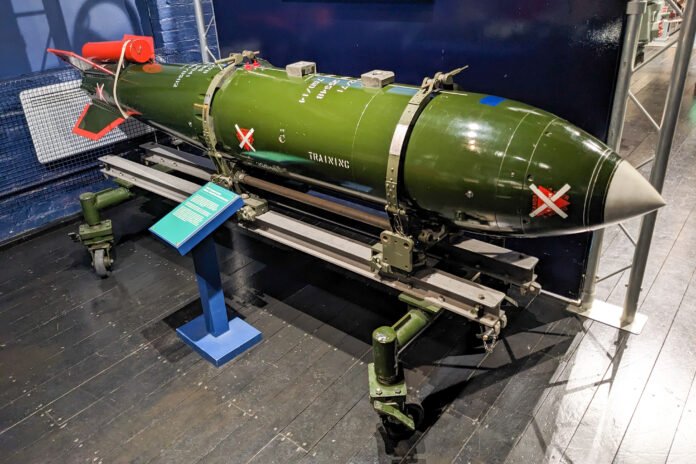Since Friday, Israeli air and missile strikes have targeted dozens of sites across Iran, including senior military installations, missile-production facilities and several locations linked to its nuclear program. Among the most high-profile blows was the reported killing of over a dozen top nuclear scientists and significant damage to the Natanz enrichment site. Yet, military commanders and nuclear proliferation experts now agree these attacks have not decisively set back Tehran’s atomic ambitions.
Tactical Success, Strategic Shortfall
- Elimination of Key Personnel: The strikes successfully eliminated leading scientists involved in uranium enrichment research.
- Damage to Infrastructure: Satellite imagery and Iranian officials confirm breaches at the Fordow and Natanz sites, as well as power disruptions to enrichment cascades.
- Limited Delay to “Breakout” Capability: Israeli sources estimate the operations may have delayed Iran’s ability to produce a bomb—its “breakout” window—by only a few months. In contrast, U.S. intelligence assesses Iran remains at least two to three years from weapons-grade capability, even before these attacks.
Why the Nuclear Program Survives
- Deeply Buried Facilities: Fordow, carved into a mountain near Qom, lies beyond the reach of most conventional munitions. Without access to U.S. “bunker-buster” bombs, Israel cannot easily destroy its centrifuge halls.
- Redundancy and Dispersion: Iran has spread its enrichment activities across multiple sites, some hidden in remote desert locations and others built to withstand heavy damage.
- Rapid Repair and Concealment: Iran has demonstrated a capacity to spin up centrifuges swiftly after previous sabotage incidents (e.g., the 2020 Natanz bombing) and to rebuild damaged infrastructure under layers of concrete and rock.
Impact on Iranian Resolve
- Domestic Backlash and Rallying Effect: Rather than sparking widespread revolt against the regime, the strikes have united many Iranians—regime sympathizers and dissidents alike—in fear and anger. Scenes of civilian casualties, including the deaths of children in Tehran apartment blocks, have stoked calls for a nuclear deterrent among a populace that once debated the wisdom of atomic ambitions.
- Political Entitlement to Nuclear Arms: Polling since the 2021 Gaza conflict already showed a surge in public support for nuclear development; military action has only deepened beliefs that Iran “cannot rely on others” for security.
Regional and International Reactions
- United States: While publicly condemning unilateral strikes, the Biden administration has offered logistical support short of direct military involvement. U.S. intelligence continues to monitor Iran’s nuclear activity via clandestine networks and satellite reconnaissance.
- European Union: European leaders have expressed alarm but stop short of sanctions relief, instead urging renewed diplomacy under the framework of the 2015 Joint Comprehensive Plan of Action (JCPOA).
- Gulf Arab States: Countries such as Saudi Arabia and the UAE, wary of Tehran’s influence, have offered quiet backing to Israeli security concerns but remain reluctant to endorse overt military measures that risk wider war.
Prospects for a Diplomatic Solution
- Diplomacy Under Strain: Negotiations scheduled in Oman this weekend have been suspended. Iranian foreign minister Hossein Amir-Abdollahian characterized the air strikes as “acts of terrorism” that preclude meaningful talks.
- Netanyahu’s Ultimatum: Prime Minister Benjamin Netanyahu has stated his preference for a comprehensive agreement ensuring “no enrichment capability,” but has given scant indication that Israel will accept inspections akin to IAEA protocols without U.S. guarantees.
- U.S. “Captain’s Call”: Some analysts foresee that the final decision on any further U.S. involvement—or an outright veto of additional attacks—may rest with President Donald Trump, who has privately expressed both support for military pressure and a desire to return to negotiation.
Long-Term Consequences
- Acceleration of Iran’s Nuclear Push: If the conflict subsides without a binding, verifiable deal, many believe Tehran will expedite weapons research as insurance against future aggression.
- Erosion of Non-Proliferation Norms: The abandonment of diplomatic channels in favor of air strikes sets a precedent that may encourage other states to pursue nuclear arms as the only sure defense.
- Potential for Ground Operations: With air power proving insufficient to eliminate deeply buried sites, Israel may contemplate special-forces incursions—an operation fraught with high risk of escalation and civilian casualties.
Expert Perspectives
Sima Shine, former Mossad research head:
“This conflict has shown Iranians that, if unchecked, Israel may strike again. Unless the nuclear program is dismantled or locked down by treaty, Iran will almost certainly build a bomb.”
David Albright, Institute for Science and International Security:
“Kinetic strikes can only buy so much time. A robust diplomatic framework—with intrusive inspections—is the only way to prevent proliferation in perpetuity.”
What Comes Next
- Renewed Diplomatic Effort: International mediators may intensify shuttle diplomacy between Washington and Tehran, seeking to salvage the JCPOA or a new accord with stronger enforcement measures.
- Israeli Military Calculus: Israel must weigh the limited gains of further strikes against the risk of total war with Iran and its proxies across the region.
- Iranian Retaliation: Tehran’s missile and drone volley, though blunt, underscores its ability to retaliate—raising the specter of wider conflict that could draw in U.S. forces.
Conclusion
Israel’s dramatic air campaign has showcased its intelligence prowess and delivered a symbolic blow to Iran’s leadership. Yet the resilience of Iran’s nuclear infrastructure, combined with the likely surge in Tehran’s determination to develop a bomb, means that military action alone has failed to extinguish the threat. As both sides regroup, the world watches to see if diplomacy can reclaim the lead role—before a regional skirmish becomes a full-scale conflagration.
READ MORE: Aid Centre Shootings in Rafah Leave Dozens Dead and Hundreds Wounded
